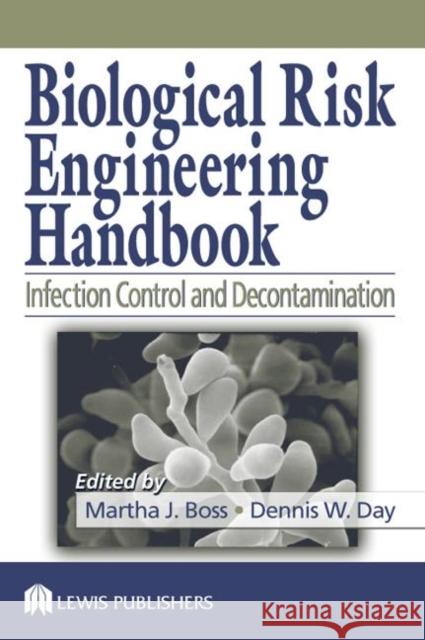Biological Risk Engineering Handbook: Infection Control and Decontamination » książka
Biological Risk Engineering Handbook: Infection Control and Decontamination
ISBN-13: 9781566706063 / Angielski / Twarda / 2002 / 528 str.
Biological Risk Engineering Handbook: Infection Control and Decontamination
ISBN-13: 9781566706063 / Angielski / Twarda / 2002 / 528 str.
(netto: 741,76 VAT: 5%)
Najniższa cena z 30 dni: 772,46
ok. 22 dni roboczych
Bez gwarancji dostawy przed świętami
Darmowa dostawa!
Presents bio-risk control measures from the experts actually making these decisions in the field Discusses both the assessment and identification of biological risks and the design and engineering solutions available to remedy these risks Presents monitoring, sampling, and analysis methods and techniques for risk determination Addresses liability issues as well as regulations and industry standards Contains over 200 illustrations to show both laboratory and real-world scenarios, including an 8-page color "pull out" section This handbook discusses biological risk engineering, an extension of industrial hygiene that involves the assessment, control, and decontamination of indoor biological risks. The book synergizes the knowledge of experts in various fields, from law to toxicology, to provide a compendium of information for applying science to limit biological risk. Biological Risk Engineering Handbook: Infection Control and Decontamination begins with a microbiological dictionary, using pictures to illustrate the basic morphology and culture appearance of fungi, bacteria, viruses and prions. The text then reviews sampling and laboratory procedures to ensure coordination between sampling teams and their ultimate receiving laboratory. The contributing authors further examine interpretation issues associated with toxicological studies and risk assessment in hopes of providing further impetus for synergistic studies related to risk assessment and management of biohazardous agents. Other topics include ventilation design, infection control, and the use of biocides. The discussion of Legionella control and cooling towers serves as a case study of how design, maintenance, and decontamination should be a seamless process. The contributors also discuss patent utility requirements, insurance processes, laws, and current regulations, including a chapter on Tuberculosis that compares OSHA and CDC guidelines. Finally, security is addressed from the standpoint











